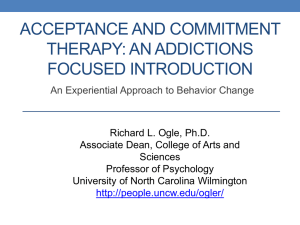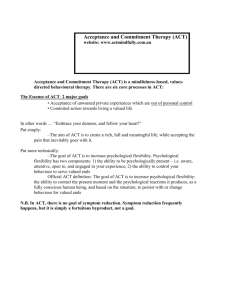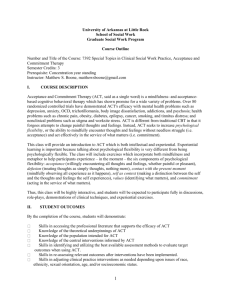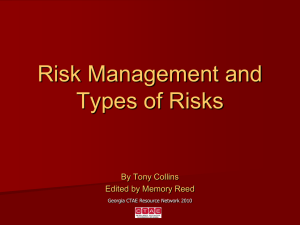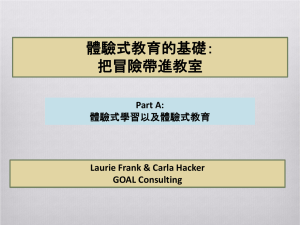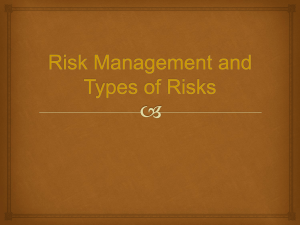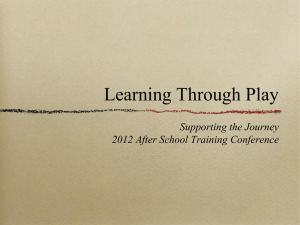Acceptance and Commitment Therapy for Substance
advertisement
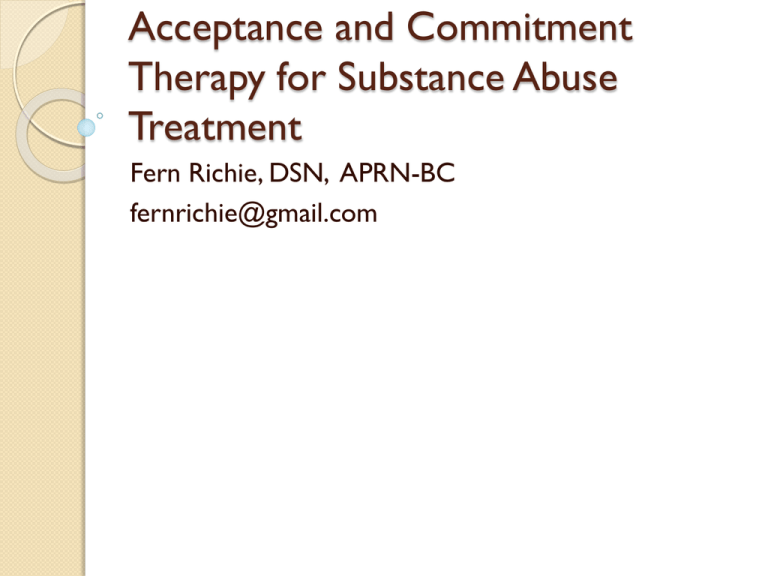
Acceptance and Commitment Therapy for Substance Abuse Treatment Fern Richie, DSN, APRN-BC fernrichie@gmail.com Serenity Prayer “God, grant me the serenity to accept the things I cannot change, the courage to change the things I can, and the wisdom to know the difference.” Acceptance & Commitment Therapy “I just want to be happy” – a psychological trap of needing to “feel good” all of the time Psychological flexibility - a better goal? Being in the present moment with full awareness and openness to our experience, and taking action guided by our values Living a full, rich, and meaningful life Both pleasurable and uncomfortable feelings will be experienced Rather on than attempts to avoid pain, ACT focuses Helping us make room for pain Reduce its impact Create a life worth living despite pain More on ACT Based on assumption that many unwanted internal experiences cannot be eliminated, so they must be accepted Is a behavioral therapy, with an existential component By using mindfulness and acceptance strategies, we can step back from instantaneous emotional reactions rather than use over them By accepting, rather than fighting/struggling with aspects of our inner worlds over which we have no control, we can invest time and effort in what we can control – practice recovery strategies Persist when persistence is useful Desist when what we are doing isn’t working The Importance of Values Values are the fuel; the danger of running on empty Values get lost in the shuffle of living Values and adjustment disorder If not “living” our values, we will begin to feel uncomfortable If feeling uncomfortable May incorrectly appraise a stressor May try to “fight the feeling” End up feeling worse, not better What About Symptom Reduction? Emphasis of most Western psychotherapeutic approaches is symptom reduction ACT assumes the position that quality of life is primarily dependent upon mindful, values-guided action This is possible regardless of how many symptoms you have Through ACT we try to change our relationship with our symptoms Thus values-congruent living is desired outcome Usually ACT will result in symptom reduction We All Suffer… “Life is spelt H.A.S.S.L.E.” – Albert Ellis “Life is difficult.” – M. Scott Peck “Life is suffering.” – Buddha “Shit happens! - Anonymous ACT and Suffering ACT aims to help people learn and grow as a result from their suffering ◦ Use pain as a springboard into creating a more meaningful life “Our clients are not broken, they are just stuck.” What gets people stuck? ◦ Fusion ◦ Experiential avoidance Fusion Our thoughts dominate our behavior ◦ In ACT, we might say “you’re being pushed around by your thoughts” or, “the thoughts are telling you what to do” How workable are the thoughts? ◦ Does the thought help client move toward a better life? ◦ No attempt in ACT to change one’s thoughts Experiential Avoidance Trying to get rid of or escape from unwanted experiences Higher experiential avoidance is associated with higher levels of substance abuse (Hayes et al, 2004) Must help the client get in touch with the cost and futility of experiential avoidance Mantra of ACT A Accept one’s thoughts and feelings; be present C Choose a valued direction T Take action ACT for Substance Abuse Treatment? Sit in kindness with the uncertainty of recovery Accept your life as it is – but also how it may become Find strength in the things that really matter to you Commit to act in the present moment Learn how a change of perspective can help you see yourself with fresh eyes Wilson, 2012 Mindfulness Paying attention in a particular way: on purpose, in the present moment, nonjudgmentally Curiosity and openness, even to a difficult moment (better than running from it or fighting it or using over it) Helps to develop a detached relationship to thoughts and feelings Shift from “impulsive reacting” to “skillful responding” Six Core Processes of ACT Defusion Acceptance Contact with the present moment Self-as-Context Values Committed Action Defusion Fusion means getting caught up in our thoughts and allowing them to dominate our behavior Rules Reasons Judgments Defusion means separating or distancing from our thoughts, letting them come and go, rather than being caught up in them Noticing thoughts rather than being caught up in thoughts Letting thoughts come and go rather than holding on to them Getting to Defusion Begin to notice your thoughts “So, what’s your mind telling you now?” “And what does your ‘thinking self ’ have to say about that?” Next, look at workability of your thoughts “So, is that a helpful thought? If you hold on tightly to it, does it help you deal with the situation differently?” “If you let that thought tell you what to do, will it take you in the direction of a rich, full, and meaningful life, or in the direction of being stuck and suffering?” Notice when you are fused or defused with your thoughts “So, right now, how caught up are you in that thought?” Acceptance Not the same as approval, tolerance, or even liking something Accept if and when doing so enables us to act on our values Is a process, not a technique ◦ Expand, make space ◦ Letting go of any urge to resist or avoid what is in front of you at the present moment This may mean “sitting with” a craving to use Recognize that a craving is just that – a craving ◦ Show self-compassion “I’m not a bad person because I am craving the dope right now.” Contact with Present Moment Being in the here and now, fully conscious of our experience (rather than being lost in our thoughts and missing out on life) Helps us perceive more accurately what is happening Whether to change or persist in current behavior This is hard for those of our clients who have experienced trauma Values Statements about: ◦ What we want to be doing with our life ◦ What we stand for ◦ How we want to act on an ongoing basis Leading principles that guide and motivate us Our hearts deepest desires for the way we want to be and act in the world Is success measured by achievement of goals? Is success measured by living out our values? Committed Action Taking larger and larger steps of effective action, guided and motivated by values Being flexible and adaptable Persist with or change behavior to better coincide with one’s values Steps to Committed Action Choose a domain of life that is high priority for change Identify the values to pursue this domain Develop goals, guided by these values Take action mindfully From Suffering (Active Addiction) to Vitality (Recovery) Fusion with thoughts Experiential avoidance Unworkable actions Being present Opening up Doing what matters ACT and AA/NA A perfect match? No, but a great fit. Both are into-action programs ◦ We must create the life worth living Non-acceptance blocks us from doing this Both focus on practice Both are traditions that are a means to an end: the end is a better life Both focus on commitment in the “here and now,” not the future ◦ “In this very moment, am I engaged in right action?” ◦ “Do the next right thing” ‘Having spent the better part of my life trying to either relive the past or experiencing the future before it arrives, I have come to believe that in between these two extremes is peace. ◦ Author unknown Helpful Websites http://www.thehappinesstrap.com/ http://contextualscience.org/act Books Wilson, K. G. (2012). The Wisdom to Know the Difference: An Acceptance and Commitment Therapy Workbook for Overcoming Substance Abuse. Oakland, CA: New Harbinger Publications. Harris, R. (2009). ACT Made Simple. Oakland, CA: New Harbinger Publications. Harris, R. (2008). The Happiness Trap. Boston: Trumpeter. Thanks for your participation!

